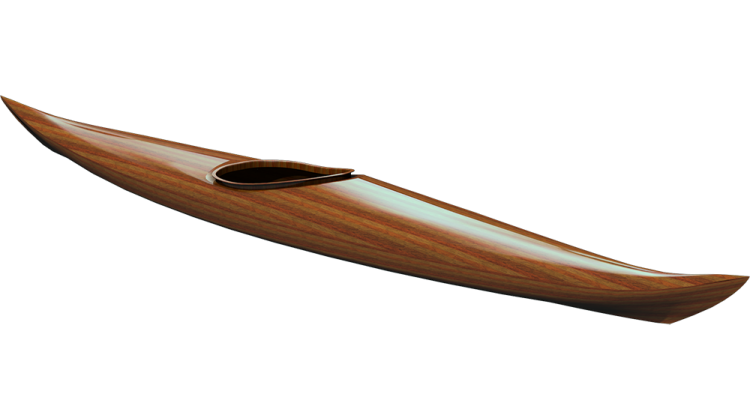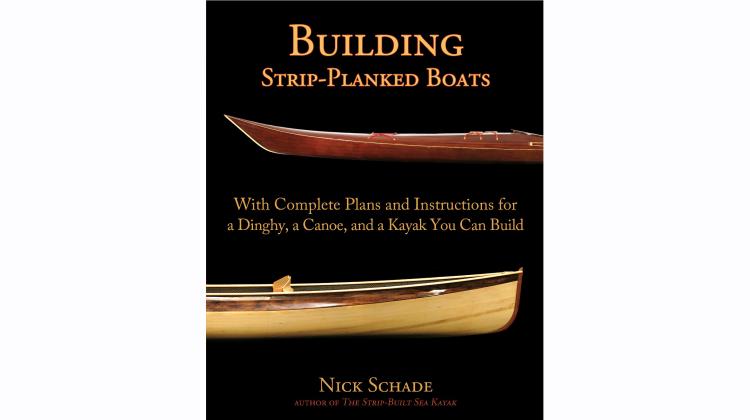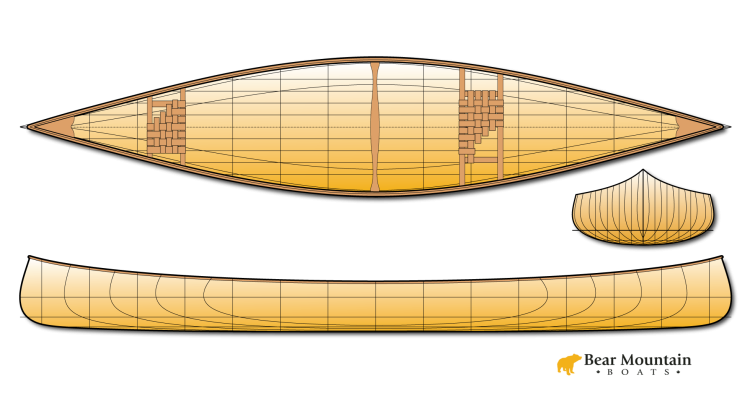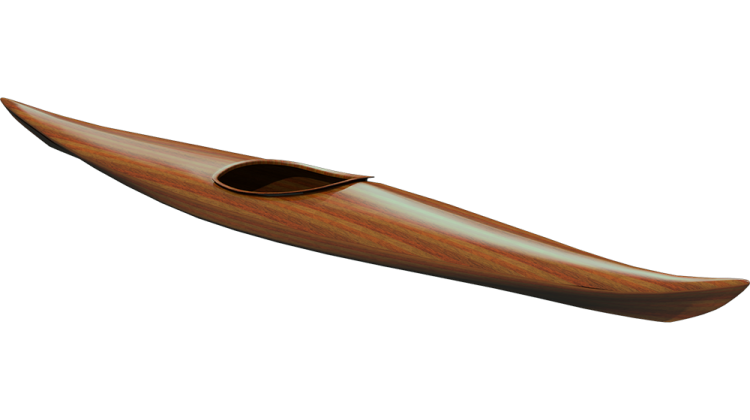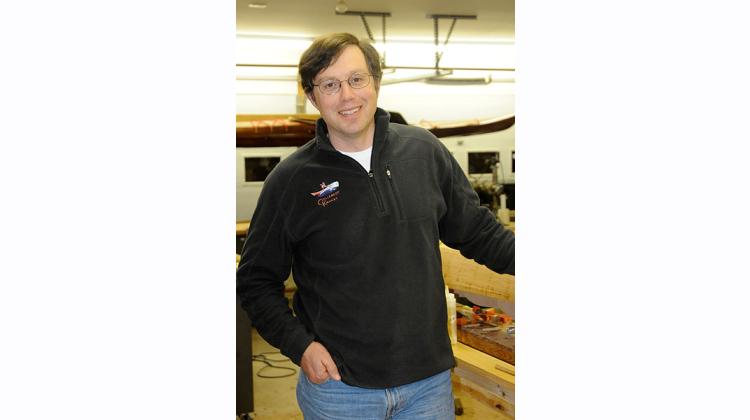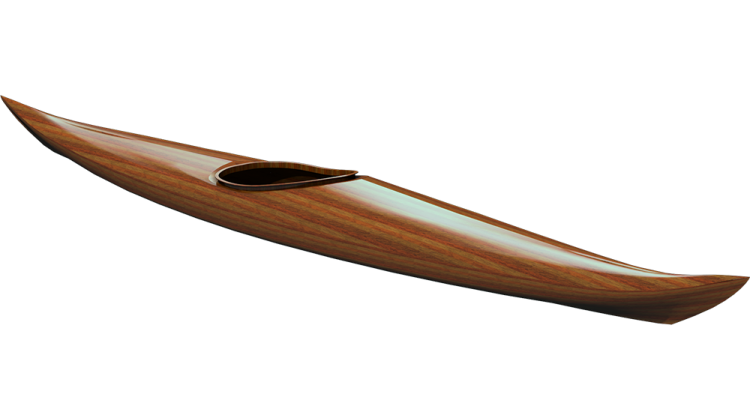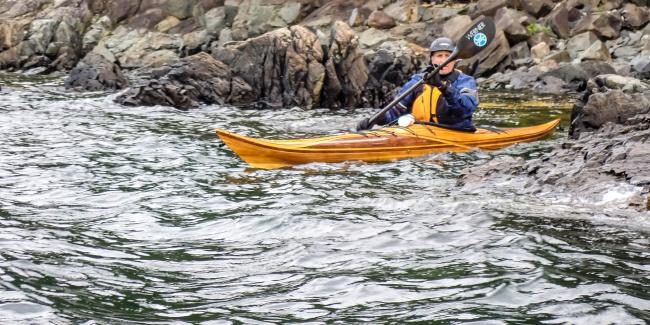The puzzle joints make assembling the plywood panels very straight forward. There is almost no way to mess up which parts go together because the puzzles will only fit together in one way. The CNC cut cut makes for very precise joints which usually fit together quite easily. If you can't get the fit started, use a small piece of sandpaper and sand just the edge of the joint, being careful not to round over the edges.
If the joint is misaligned you may find it is hard to get it to fit, so check that everything is lining up. Once you get the joint started, if you are having trouble getting it tight, you can use a mallet to set the joint flush. Don't try to force a joint that just isn't fitting together, you can chew up the edge trying to cram it together. Get the joint started and only use force if it feels like force will help.
For the surface of the finished boat to be smooth, the puzzle joints must fit flush. Any small irregularity in the joint will telegraph through the fiberglass to the surface of the completed boat. I'm using a quick Cyanoacrylate (CA) glue to hold the joints together. This method is quick, but it does offer the opportunity for the joints to be glued together unaligned. Work carefully and pay attention to the alignment as you work.
The CA glue is not very strong, but it is generally strong enough to hold the parts together until the boat is fiberglassed. I apply small dots of glue right onto the seam between the two panel parts. The "gel" type CA glue is low enough viscosity that it will flow into seam a bit and thick enough that it will bridge small gaps. Place dots every inch (a couple centimeters). Go as far along the seam as you can hold tight and flush with your hands while the glue cures. A quick spray with the CA glue accelerant will dry the glue in a matter of seconds. You can give a light spray and then hold the part with both hands. Don't get your fingers in the glue or you may become a permanent part of the boat. Work down across the joint gluing and spraying as needed to hold the joint smooth and flush.
I give a light sanding of the glue dots when I'm done so they don't stick up much. The glue soaked into the seam should be enough to hold the joint even with the dots sanded away.
It does happen that these spot welds of glue are not enough. Handle the parts carefully, but don't fret if they pop apart, just re-glue them and maybe use a little more.
Wiring the Bottom
Once all the puzzle joints are assembled, it is time to start making a boat-like object. I start by wiring together the bottom panels. Stack the two sides together with the outer surface on the outside. Find the straighter edge, this will be the keel. This whole edge gets wired together.
The wire typically comes in rolls, you will need a bunch of 3 to 4 inch long (7 - 10 cm) pieces of wire. This rolls i had could be cut into 3rds to provide a good length.
Poke a wire through a hole so it passes through both panels. Fold the wires towards the edge and then make them cross. Grab the ends and twist them together so they cross about 1/4" (~0.5 cm) from the edge. Give the wire 3 or 4 snug twists so the wires won't slip. You don't want the wires too tight so you will not be able to open up the bottom, but you want them tight enough that the bottom seam will be tight when you do open the panels.
Put a wire stitch in just about every hole along the keel line. Where you find double holes (2 right next to each other) choose on of the holes and leave the other empty. These double holes show where the building forms will go.
Open the Bottom Panels
Once the keel line is completely stitched together you can open up the bottom. I start by wiring in two forms #3 and #5. Find the double stitch holes along the bottom. Count backwards from the front to determine which form goes where. Go to the 3rd set of double holes to install form #3.
Bend over a piece of wire into a "U" shape and insert it from the inside out through the double stitch hole, one leg of wire through each hole. While you are at it you can put these wires through both panels. Then tie one wire through the hole at the chine corner of the designated form. Now, open up the bottom like a book. Resists the urge to use the form as a lever. The wires will screech and grown as the panels pull apart and tighten them up. It will take some force to push the two sides down into the form. The wood and wire is pretty strong, but be a little careful in applying force across one of the glued puzzle joints. When the bottom is opened up enough to fit into the form wire down the far side into the hole in the form. Repeat with form #5.
Stitch Together the Sides
Lay the two hull side panels together with the outside surface out. Wire together the stems at each end of the sides. To move the panels it is best to hold them on edge. If you try to lift them while laying flat, the will droop and flex the puzzle joints potentially breaking them. I clamped a stick to the pieces to add more stiffness while I moved them to the boat.
Make sure the bow of the sides goes with the bow of the bottom. If you look at the puzzle joints along the keel line of the bottom you will notice that the puzzle tab at the keel edge points towards the bow, use this as reference if you are confused. If you find that the stitch holes do not line up between the side and bottom, you likely need to flip the side around.
Stitching in the Side Panels
When the sides are on the bottom, open up the middle so the sides meet the forms. Run a wire through the double stitch holes at the top out into the hole at the top of the forms #3 and #5. Now is the time to add the other forms. Wire each in place only through the top of the forms with the wires running from the inside out. Adjust the sides so that they fit along the edge of the bottom.
Run wires from the inside out through a hole on the side and the bottom and twist on the outside. Make sure the holes on bottom and side are lined up.
Twisting Wire Stitches
Think of the soft copper wires as clamps to hold the panels tightly together. They are not there to draw the panels tight, they work to hold them together after they are already tight. Use your hands to align the seam and hold it together. Use pliers to pull the slack out of the wires and then give a good twist. If you try to make the seam tight by twisting tighter and tighter, you will just end up breaking the wires.
Stitch a wire through each set of holes. Again at the double holes you don't need to do boat sets, just one between each panel. At forms #3 and #5 you may find that the wire at the chine interferes with getting a tight seam between the panels. This wires have served their purpose, you can remove them.
Once all the wires are in place, check the seam with your hands. You want to feel a smooth feel between the two panels. There should not be a ridge where one edge is more prominent than the other. Apply a little pressure with your hands to get the seams aligned. If they shift a lot after you may need to tighten up your stitches.
Gluing the Seams
I use a quick spot weld of CA glue to bond together the panels. This is a fast way to get on with the job, you could use a small epoxy fillet instead, but the CA glue is set almost immediately. A couple dots between each stitch is enough. The spot of glue should not be too big or it will interfere with the eventual fillet. A quick spray of accelerant will set the glue. Apply glue along all the seams including into the stems.
Remove the wires. As soon as the CA glue is dry, the stitching has done its job and can come out. The boat is delicate still so don't rough house with it, but the wires aren't needed. Clip the wires with wire cutters and pull them. Leave the wires that attach the top of the sides to the top of the forms, but all the othe wires can come out
Filleting the Seams
In the video I assembled the deck before filleting but you can finish the hull first if you wish.
Mix up some dookie schmutz. This is a mix of epoxy and wood flour. Mix up a batch of epoxy and then add enough wood flour to make a peanut butter consistency. In the video I put this mix in a cake decorators bag, but a one gallon zip lock freezer bag work very well. Cut a 1/4" hole (6mm) in the corner. Use this tool to dispense a smooth bead of schmutz into the seam. Use a smooth, steady pressure and move your hands at an even speed to get a consistent bead.
A plastic picnic spoon makes a very nice filleting tool. Put your index finger in the bowl of the spoon and use firm pressure and moderate speed to press the material into the seam. Try to avoid dabbing at the material as this will just make a rough surface. Use a dispensing bag to add more schmutz as needed. Excess material can be scooped back into your mixing cup and add back to the bag as needed.
A plastic applicator squeegee scrapes up the excess schmutz that gets squeezed out the sided. You should be able to see a bare spot on either side of the fillet where the spoon touched the surface of the wood. Use this as a glued for the corner of your scraper. Angle the scraper back so it comes in under the schmutz.
The stems need a big fillet. If you hit anything it is likely to be with the bow, and the fillet adds strength. Also the fillet make it easier for the fiberglass to conform to the shape. I squeeze in a big thick worm of schmutz and then use a gloved finger to shape it. Pulling your glove tight on your finger will make for smoother results.
Fiberglassing
The fiberglass goes on immediately after you have competed the fillets. If you let the schmutz cure it would need to be sanded smooth. With the soft fillet material you don't need to to do any sanding. I didn't include the wet out of the fiberglass in this videos, you can see fiberglassing in other videos.
Assembling The Deck
The deck goes together in much the same way as the hull. You will not in the video that that I do not assemble the puzzle joints that connect the sides with the aft deck until I have forms #3 and #5 installed. I then start stitching at the cockpit area.

